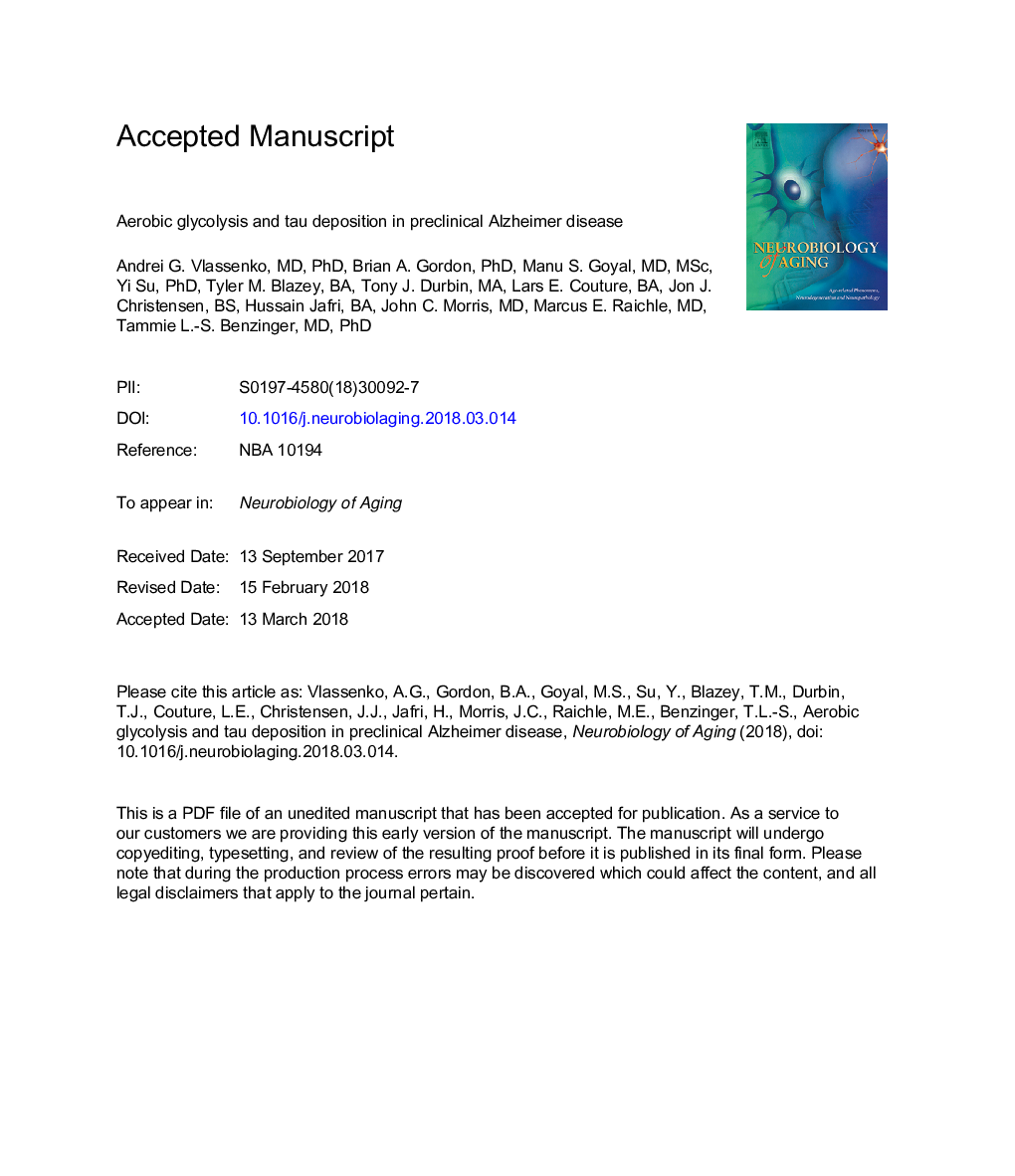| Article ID | Journal | Published Year | Pages | File Type |
|---|---|---|---|---|
| 6802915 | Neurobiology of Aging | 2018 | 14 Pages |
Abstract
Research of the human brain metabolism in vivo has largely focused on total glucose use (via fluorodeoxyglucose positron emission tomography) and, until recently, did not examine the use of glucose outside oxidative phosphorylation, which is known as aerobic glycolysis (AG). AG supports important functions including biosynthesis and neuroprotection but decreases dramatically with aging. This multitracer positron emission tomography study evaluated the relationship between AG, total glucose use (CMRGlc), oxygen metabolism (CMRO2), tau, and amyloid deposition in 42 individuals, including those at preclinical and symptomatic stages of Alzheimer's disease. Our findings demonstrate that in individuals with amyloid burden, lower AG is associated with higher tau deposition. No such correlation was observed for CMRGlc or CMRO2. We suggest that aging-related loss of AG leading to decreased synaptic plasticity and neuroprotection may accelerate tauopathy in individuals with amyloid burden. Longitudinal AG and Alzheimer's disease pathology studies are needed to verify causality.
Keywords
Related Topics
Life Sciences
Biochemistry, Genetics and Molecular Biology
Ageing
Authors
Andrei G. Vlassenko, Brian A. Gordon, Manu S. Goyal, Yi Su, Tyler M. Blazey, Tony J. Durbin, Lars E. Couture, Jon J. Christensen, Hussain Jafri, John C. Morris, Marcus E. Raichle, Tammie L.-S. Benzinger,
